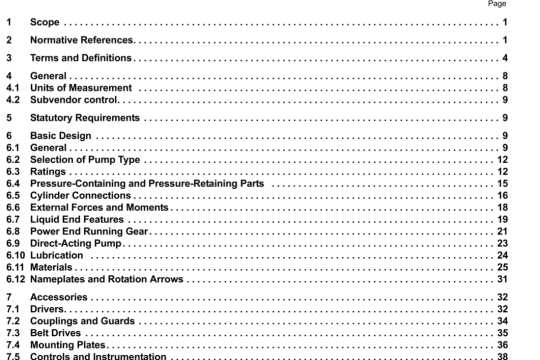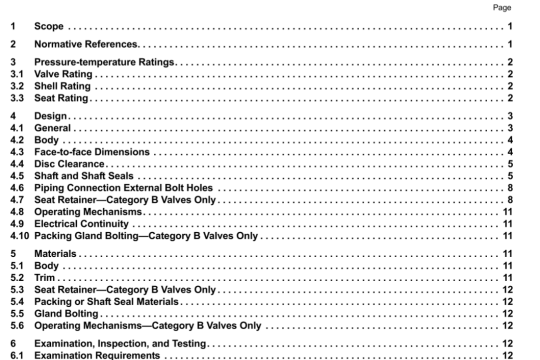API MPMS 2.2F:2004 pdf download
API MPMS 2.2F:2004 pdf download.Petroleum and Liquid Petroleum Products-Calibration of Horizontal Cylindrical Tanks Part 2: Internal Electro-optical Distance-ranging Method.
8.2 Location of target points — General principle
Target po4nts shall be located on each surface, randomly but distributed over the entire surface. No targef points shall be positioned within 300 mm of a welded seam or stiffener
NOTE it is not a requirement of this method that any parlicular point be used as a target point
8.3 CylindrIcal courses
A minimum of 16 target points per course in tanks of diameter less than 3 m, and a minimum of 24 target points per course in tanks of diameter 3 m or greater, shall be sbghted, The uncertainty of calibration will be reduced if the number of target points is greater than the minimum specified.
8.4 Heads
84.1 Flat end, elliptical, spherical head, conical head
A minimum of 50 target points, randomly but evenly distributed over the surface, shall be sighted. The uncertainty
of the calibration will be reduced if a greater number of target points is used.
8.4.2 knuckle-dished end (head)
A minimum of 16 target points, randomly but evenly distributed over the surface, shall be sighted. The uncertainty of the calibration will be reduced If a greater number of target points Is used.
9 Procedure for calibration
9.1 Measure and record the horizontal angle, the vertical angle and the slope distance to each reference target point. Two successive readings, at each point, shall be taken and they shall agree within the tolerance given In clause 10. Compute and record the average angles and distance to each point.
9.2 Measure the horizontal and verlical angles and the slope distance to each target point on a surface See Figure 2.
9.3 If more than one measurement station is required, move the instrument from station to station, taking sufficient measurements at each station to ensure a proper traverse,
9.4 After all measurements from one measurement station are completed, repeat the measurements to the reference target points.
9.5 If tile repeated horizontal and vertical angles and slope distances to each reference target point do not agree with the measurements taken in 9.1, within the tolerances given in clause 10, determine the reasons for such disagreement, eliminate the cause and repeat the calibration procedure.
9.6 Commence measurements at one head and progress through the tank to the other head.
9.7 Carry out all measurements without interruption.
10 Tolerances of reference target points
10.1 Distance verification
From each measurement station, the slope distance to each reference target point at the beginning and end of the calibration shall be within ± 2 mm.
11.2 Data
The following data shall be determined and processed:
a)the operating temperature of the liquid to be stored in the tank;b)the operating pressure of the tank;
)safe filling height and maximum filling height;ddeadwood.
11.3 Drawings
lf tank construction drawings are available, calibration measurements shall be compared with the correspondingdimensions shown in these drawings. Any measurements which show significant discrepancies shall be checked.
lf the calibration and drawing measurements do not agree, the reasons for the discrepancy shall be deteminedand the calibration procedure repeated, if necessary.
12 Calculation and development of capacity tables
12.1 Compute the data which describe, in mathematical terms, each surface.Ensure that the various sets of datafor each surface are coherent and describe the tank.(see ISO 7507-4:1995, annex B).
12.2 The development of the capacity table shall be carried out in accordance with ISO 12917-1.The followingcorrections, as described in ISo 12917-1, shall be applied in the development of the capacity tables:
a)correction to the certified tank-shell temperature;
b)correction to the certified tank-shell pressure;ccorrection for deadwood;
dcorrection for slope.




